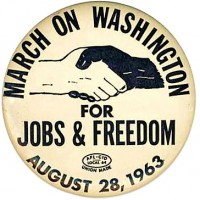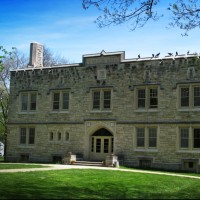
I am very proud of my life accomplishments, not the least of which is becoming president of Kenyon College. A great deal of my success can be attributed to the support I have been given by my family and mentors throughout my career. But, I also owe a tremendous debt to the large numbers of brave men and women who fought for civil rights, many who risked their jobs, their safety, indeed their lives, in order to change the world. On the anniversary of the March on Washington, each of us should take a moment to reflect upon both how much has changed in the past fifty years in the United States as a whole and here on our Hill in Gambier, and how we can all live our lives with the courage, commitment, and determination that characterized the generation of the civil rights movement.

Powerful lessons sometimes arise from simple acts such as getting on a bike and riding farther than you thought you could do; volunteering with hundreds of others to support an important cause; or talking with a man standing on the road with a sign that says “Thank you for saving my wife.”

What is it about Kenyon that produces such outstanding scientists? At Kenyon students study the science in the context of the other liberal arts, and in these classes they are regularly challenged to look at difficult problems from multiple perspectives, to critically analyze scholarly writing, and to communicate effectively.

As with the other major pop culture touchstones of the summer (Terry Francona’s first season managing the Indians; “Man of Steel”; the new album by Kanye West; and the new novel by Meg Wolitzer), the excitement around the Gambier July 4th parade inevitably raised the question, “Does it live up to the hype?”

Some boxes have been unpacked, pictures are on the shelves, and my computer is connected to the internet; already, Ransom Hall is feeling like home. The excitement of my first week at Kenyon has been balanced by quiet reflection.





